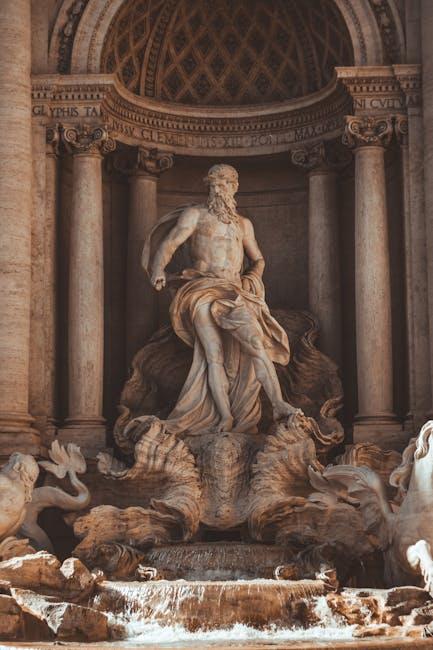In the cobblestone alleys of Paris, the aroma of freshly baked baguettes mingles with the scent of global fast-food chains. The vibrant, eclectic streets of Barcelona echo with the chatter of tourists from every corner of the globe, while traditional flamenco rhythms compete with the latest international pop hits. Across Western Europe, a quiet transformation is underway—a metamorphosis driven by the relentless tide of globalization. This evolution prompts a poignant question: Is the authenticity that once defined these culturally rich nations slowly being diluted, or is it simply adapting to a more interconnected world? As we journey through the heart of Western Europe, we explore the delicate balance between preserving cultural heritage and embracing the dynamic forces of global influence, unraveling the intricate tapestry of tradition and modernity that shapes the continent today.
Cultural Homogenization and Its Impact on Western European Traditions
The intricate tapestry of Western European traditions, from culinary arts to festivals, is experiencing a gradual transformation under the influence of globalization. This phenomenon, often referred to as cultural homogenization, brings about a blending of cultures, leading to both the enrichment and dilution of unique cultural identities. In cities across Western Europe, the streets that once echoed with the sounds of local languages and the scents of regional cuisines are now infused with a mix of global flavors and tongues. Traditional crafts and practices are being overshadowed by mass-produced, globally recognized brands, raising concerns about the loss of regional authenticity.
- Food and Cuisine: Local dishes are increasingly being replaced by international fast-food chains, leading to a gradual erosion of traditional culinary practices.
- Language and Dialects: The dominance of English as a global lingua franca is threatening the survival of indigenous languages and dialects.
- Festivals and Celebrations: While cultural exchange enriches festivities, it also risks diluting their original significance and meaning.
- Art and Architecture: Modern architectural styles and art forms are blending with traditional ones, sometimes overshadowing the latter.
While globalization facilitates the sharing of ideas and innovations, it also challenges the preservation of local heritage. The delicate balance between embracing global influences and safeguarding traditional customs is a pivotal conversation for Western Europe as it navigates its cultural future.
The Role of Tourism in Shaping Modern European Identity
The intricate dance between tourism and the evolving identity of Europe has become a focal point in discussions about globalization. Tourism has the power to amplify cultural narratives, spotlighting local traditions and histories that might otherwise fade into obscurity. Yet, as the influx of global travelers continues to grow, questions arise about the preservation of authentic cultural experiences. Western Europe’s iconic landmarks and vibrant cities often find themselves balancing on a tightrope between maintaining their historical essence and catering to the demands of international visitors.
Several factors contribute to this delicate balance:
- Cultural Homogenization: The ubiquitous presence of international brands and franchises can dilute local character, creating spaces that feel familiar rather than unique.
- Economic Pressures: The financial incentives of tourism can sometimes overshadow the need to protect cultural heritage, leading to commercialization that prioritizes profit over preservation.
- Community Identity: Local communities may struggle with identity shifts as they adapt to the expectations of global tourists, which can sometimes lead to a loss of traditional practices and values.
While tourism undeniably contributes to economic growth and cultural exchange, it also poses challenges that require thoughtful navigation to ensure that the essence of European identity is not lost in the globalized landscape.

Balancing Progress and Preservation in Globalized Economies
In the tapestry of Western Europe, where cobblestone streets meet cutting-edge innovation, the question arises: how does one maintain cultural authenticity in the wake of globalization? As multinational corporations spread their roots and international franchises dot city landscapes, the unique flavors and sounds of the region often risk being overshadowed by a more homogenized global culture. This raises concerns among locals and cultural purists, who fear the erosion of traditional crafts, languages, and customs.
Yet, globalization also offers a platform for the celebration and revival of local cultures. Globalization and cultural preservation need not be mutually exclusive. By leveraging the interconnectedness of today’s world, Western Europe can showcase its rich heritage on a global stage, inviting a diverse audience to engage with its history and traditions. Consider these opportunities:
- Promoting Local Artisans: Support local craftsmanship by integrating traditional products into global markets.
- Revitalizing Languages: Use digital platforms to teach and preserve regional dialects.
- Cultural Festivals: Organize international events that highlight indigenous music, dance, and cuisine.
Thus, while globalization brings challenges, it also opens avenues for preserving and amplifying the essence of Western European culture in a way that resonates across continents.

Strategies for Maintaining Cultural Heritage in a Globalized World
- Promotion of Local Art and Crafts: Encouraging the production and consumption of traditional art and crafts is crucial. This can be achieved through local festivals, exhibitions, and workshops that not only showcase cultural artifacts but also engage the community and visitors in the creation process.
- Educational Programs: Incorporating cultural heritage education in schools can foster a sense of pride and understanding among younger generations. By teaching students about local history, languages, and traditions, communities can nurture a new generation that values and preserves their unique cultural identity.
- Digital Documentation: Utilizing digital platforms to document and share cultural heritage can help reach a global audience. Creating online archives, virtual tours, and interactive platforms allows for the preservation of cultural elements in a way that is accessible to everyone, everywhere.
In addition to these strategies, engaging in cross-cultural exchanges can provide opportunities for communities to share and celebrate their cultural heritage while also learning from others. This mutual exchange can help build bridges between different cultures, fostering a more inclusive global society that respects and values diversity.
The Way Forward
As we draw the curtains on this exploration of Western Europe’s evolving identity in the face of globalization, we find ourselves at a crossroads of nostalgia and progress. The cobblestone streets, once silent witnesses to centuries of tradition, now hum with the languages and rhythms of a connected world. In this dance between preservation and innovation, Western Europe is not so much losing its authenticity as it is redefining it. The essence of these lands may be shifting, yet it is not vanishing. Instead, it is being woven into a richer tapestry, colored by both the threads of its storied past and the vibrant hues of a global future. As we ponder what authenticity truly means, perhaps it is not a fixed relic of time but a living, breathing entity, capable of adaptation and growth. And in this light, Western Europe stands not as a relic, but as a beacon of the possible harmony between heritage and modernity.
































